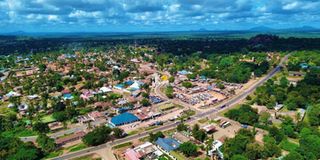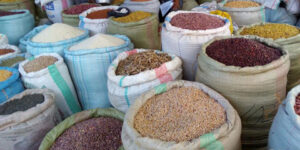In 1970, Dubai’s skyline was nothing but barren sand. Today, it dazzles with the world’s tallest tower and a $120 billion economy. Yet in Tanzania—blessed with 57 trillion cubic feet of natural gas, over half a billion tonnes of coal, and titanium reserves sufficient for 10,000 spacecraft—children still study under mango trees, farmers transport cassava past idle gas pipelines, and Kilwa’s 13th-century ruins, once the heart of a Swahili gold empire, are neglected. This area, connecting Mtwara, Lindi, Ruvuma, and others, could be transformed by the Mtwara Development Corridor (MtDC) into a series of East African Dubais, liberating over 10 million Tanzanians from poverty.
The southern regions of Lindi, Mtwara, and Ruvuma suffer systemic neglect—a stark Tale of Two Tanzanias, where the South endures economic apartheid. Despite being part of Tanzania’s food basket, the region receives disproportionately low infrastructure funding. While the national investment-to-GDP ratio was 28 percent, Lindi languished at only 13 percent. The Liganga iron, titanium, and vanadium deposits—where iron mining is virtually free due to valuable byproducts—remain untouched, even as farmers lose 40 percent of their harvests, despite sitting atop gas fields that could fuel half a continent.

Mtwara town. PHOTO | COURTESY
Education in the South is a desert, crippling human capital. The three regions of Mtwara, Lindi, and Ruvuma collectively house just one university. Compare this to Dar (over 20 universities), Arusha (over 10), and Kilimanjaro (over 10). With 85 percent of students scoring Division IV and zero in national exams, many youth flee north for education. The result? A brain drain that suffocates development.
Tourism, too, reflects this imbalance. Zanzibar welcomes around 650,000 foreign tourists annually, while Kilwa’s UNESCO World Heritage Site—a relic of the region’s richest medieval kingdom—draws fewer than 10,000 visitors. Mtwara and Lindi boast 485 km of pristine coastline, yet their potential rots in bureaucratic limbo. Meanwhile, Rwanda—a country one-tenth the size of the MtDC regions—attracts 1.4 million tourists per year.
The MtCD’s potential is vast. For starters, this is where LNG deposits are. The country’s 57 trillion cubic feet of natural gas could supercharge GDP growth to 12-18 percent annually. Yet negotiations with Shell and Equinox have dragged on for a decade, delaying a $42 billion project that could generate $2-3 billion annually in government revenue. For context, Mozambique’s LNG project—before it stalled—was projected to add 10 percent to that country’s GDP. Southerners ask: Why not us?

Mtwara port
Mining in the South is an economic free lunch. At Liganga, Vanadium and Titanium byproducts offset iron extraction costs, making it the world’s cheapest iron ore source.
The Mchuchuma coal fields could generate hundreds of megawatts of electricity—enough to light up Malawi and Zambia. Yet these projects remain stuck in bureaucratic quicksand.
Infrastructure is the backbone of any development corridor, yet the South remains disconnected. The Unity Bridge was finished in 2010, but integration to Mozambique remains limited. Mtwara Port upgrades have increased capacity to 2 million tons per year—but these efforts are nowhere near enough to justify the much-needed Mtwara-Mbamba Bay SGR railway. The Mbamba Bay Port is finally in progress – hopefully, Malawians are keeping pace at Nkhata Bay.
To unlock the South’s potential, Tanzania must abandon its incremental approach. The MtDC initiative was conceived to integrate southern Tanzania into the national economy and strengthen ties with SADC nations by expanding industrial production and exports. Half-measures will not suffice.
If Tanzania does what is necessary, by 2040, the MtDC could contribute 25 percent of the nation’s GDP—if projects like the Mtwara SEZ (think of it as Tanzania’s Jebel Ali) and regional rail links accelerate. Dubai’s transformation hinged on one principle: “If we build it, they will come.” In the 1970s, its leaders invested billions in Jebel Ali Port—a move that created a global hub. In contrast, Tanzania’s leaders appear to be waiting for investors to arrive first. The result? Three decades of lost opportunities.
What has happened in the South is not just an economic failure—it is a human tragedy. Over 10 million Tanzanians depend on the full integration of these regions into the national economic agenda. Incremental steps have done little to change the situation; the time for transformative action is now.
Tanzania needs a Marshall Plan for its southern regions. Kenya’s LAPSSET Corridor and Ethiopia’s Hawassa Industrial Park demonstrate that targeted investments yield results. The first step is to establish a dedicated corridor authority like LAPSSET, CDA, or SAGCOT to expedite projects.
Then, allocate a significant percentage of the national budget to the MtDC—not the mere crumbs of today. Unlike Dodoma, investing in the MtDC represents an investment in productive capacity—the returns will far outweigh the costs.
In 1967, Sheikh Rashid broke ground on Dubai’s port, declaring, “My grandfather rode a camel. My son will drive a Mercedes. His son will fly a plane.” Today, the youth of southern Tanzania ride bodabodas past idle cranes while their homeland remains a sleeping giant. Its resources, its people, and its untapped potential all cry out for decisive action.
And the South cannot wait any longer.














